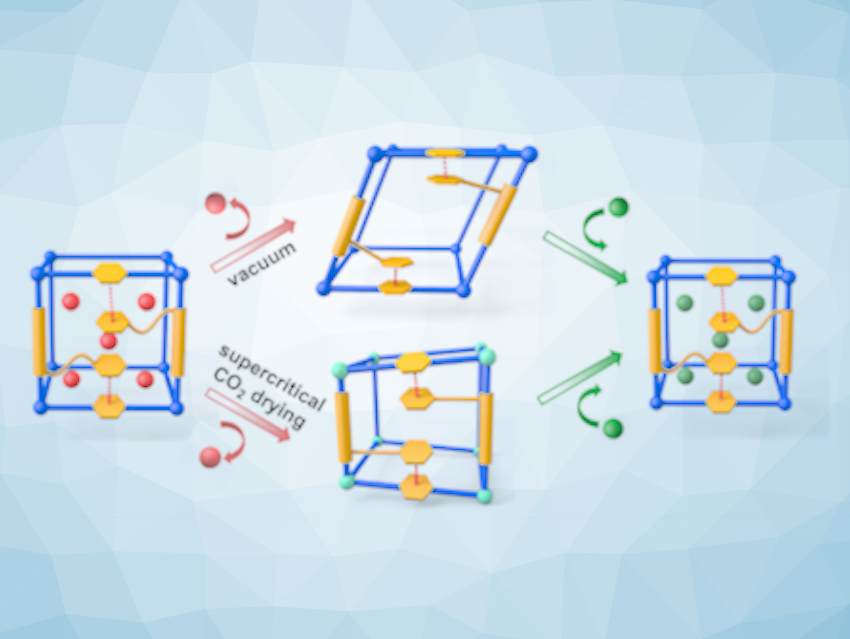Flexible porous coordination polymers (PCPs) can show reversible structural changes upon guest uptake and release. This reversible transformation occurs at a certain threshold pressure, or “gate-opening” pressure, and can be used, e.g., for separation applications. Incorporating local dynamics into such frameworks in addition to their “global” movement, e.g., by integrating the motion of substituents, could create flexibility that is unattainable in conventional PCPs.
Ken‐ichi Otake, Susumu Kitagawa, Kyoto University, Japan, and colleagues have developed a strategy that connects flexible frameworks and mobile aromatic substituents via intra-framework π-π interactions to create PCPs with both local and global flexibility. The group synthesized a series of 3D pillared-layer PCP frameworks composed of zinc ions, bipyridine, and aryl-functionalized benzoate-derivatives (schematically pictured).
The π-π interactions between different aromatic groups (pictured as yellow hexagons) prevent the framework pores from collapsing upon solvent removal. Different guest-free structures were obtained by different activation methods, i.e., thermal activation in a vacuum or supercritical drying. The integrated flexibility allows the PCP to discriminate between C6 alkane isomers by showing different gate-opening behavior. This could be useful, e.g., in petroleum refining processes to produce gasoline. The ligands in the framework could be varied further, which provides a new approach to the structural and functional design of flexible PCPs.
- Crystal Flexibility Design through Local and Global Motility Cooperation,
Ping Wang, Ken-ichi Otake, Nobuhiko Hosono, Susumu Kitagawa,
Angew. Chem. Int. Ed. 2020.
https://doi.org/10.1002/anie.202015257



